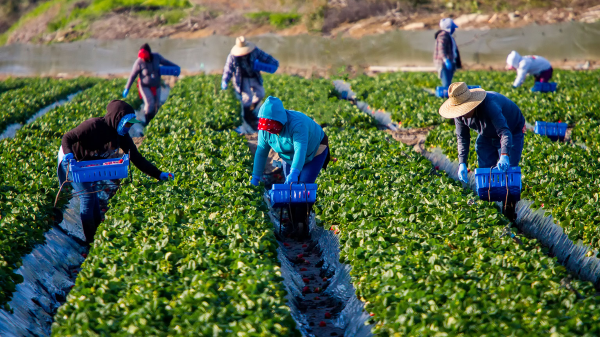As world temperatures rise and are expected to continue rising, heat-related illnesses (HRIs) are becoming a major issue in occupational health—especially in agriculture, with its high rates of outside work combined with injury statistics that are large to begin with.
A recently published study from Oregon State University (OSU) examined correlations between the levels of temperatures and work-related injuries in the agricultural and construction industries.
The research team, led by Richard Evoy of OSU, concluded: “We observed strong and consistent positive associations between temperature and worker injuries, especially amongst agricultural and construction workers. These occupations have some of the highest rates of occupational nonfatal and fatal injuries in the United States, but the impacts of heat and wildfire smoke may not have been given full consideration as significant risk factors historically.”
The researchers found that traumatic injuries increased significantly when the heat index exceeded 75 degrees, compared to a baseline of days when the index was 65 degrees or less.
The risks increased still further on days when the heat index exceeded 90 degrees: between 19 and 29 percent over baseline.
The study also indicated that wildfire smoke increased traumatic injuries, but “once the Heat Index was put in the same model all the results for wildfire smoke became insignificant. Although wildfire smoke can cause physical harm to workers’ respiratory systems, it can affect visibility and potentially change employer or worker behaviors.”
Meaning that the presence of heavy wildfire smoke could, for example, keeping workers out of the field entirely.
“Our results suggest that state occupational health practitioners should look to incorporate occupational health policies and practices to protect workers from extreme heat and wildfire smoke exposures, which will likely become more frequent in the future with climate change,” the study concluded.
The Oregon Occupational Health and Safety Division already has permanent rules laying out specific measures for employers to ensure worker safety in high heat and smoke conditions.
State officials agree that the new rules are the most stringent nationwide.
The new measures evoked the predictable reactions. A coalition of Oregon business interests filed suit to block them, contending, in the words of one spokesperson, that “the regulations are vague, nearly impossible to guarantee compliance with, and apply in conditions that would be considered safe and reasonable.”
Farmworkers’ organizations, by contrast, praised the new measures. “Concerns remain regarding some areas of these rules, but it is a good start to improving conditions for farmworkers,” said Reyna Lopez, executive director of Pineros y Campesinos Unidos del Noroeste (commonly known as PCUN), Oregon’s farmworkers union.
Washington state and California also have implemented measures protecting worker safety in conditions of high heat and smoke.
https://www.youtube.com/watch?v=x–GP8S4clg
In the meantime, the federal OSHA is years away from developing nationwide regulations.
This procedure can take anywhere between 15 months and 19 years, according to NBC News.



